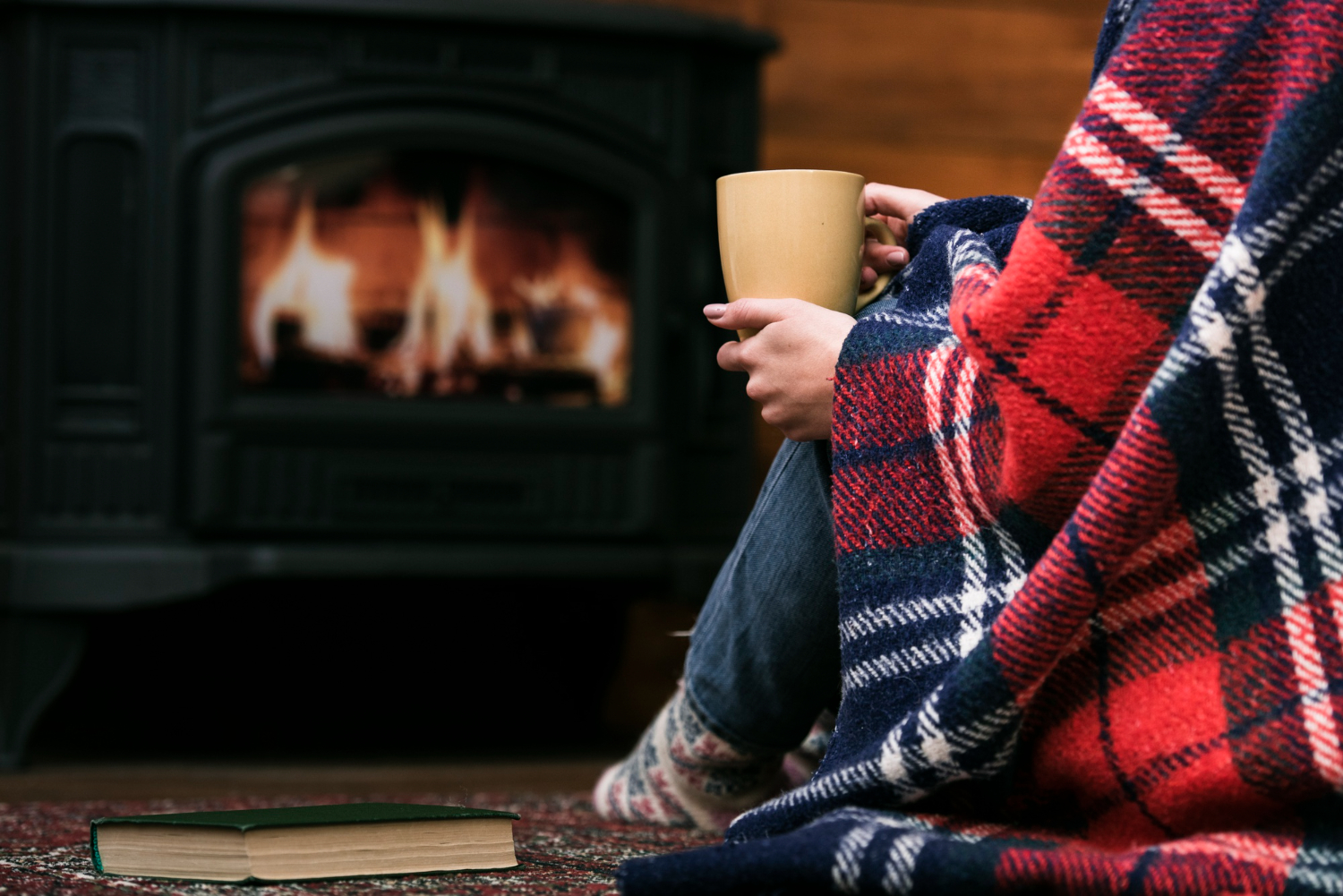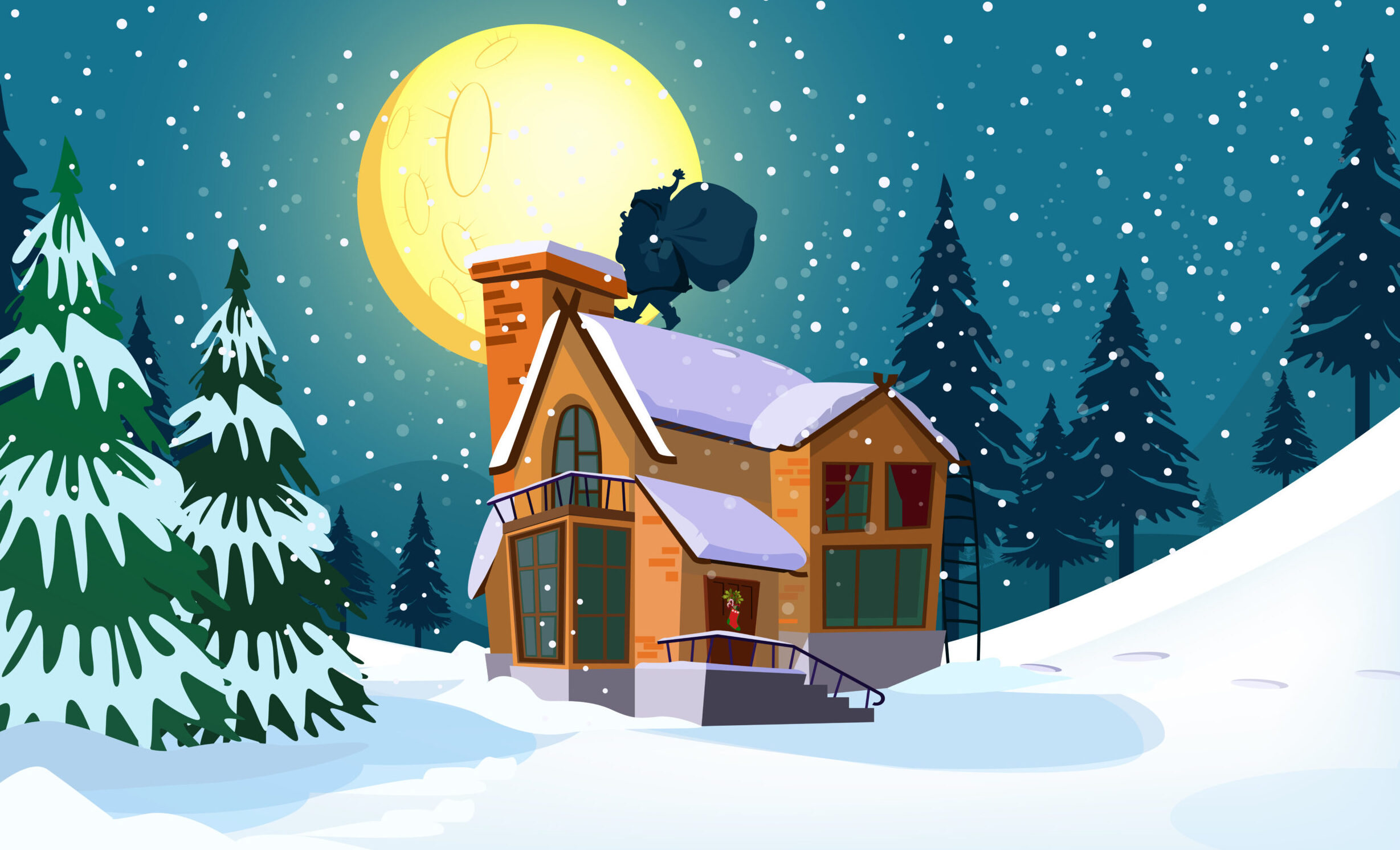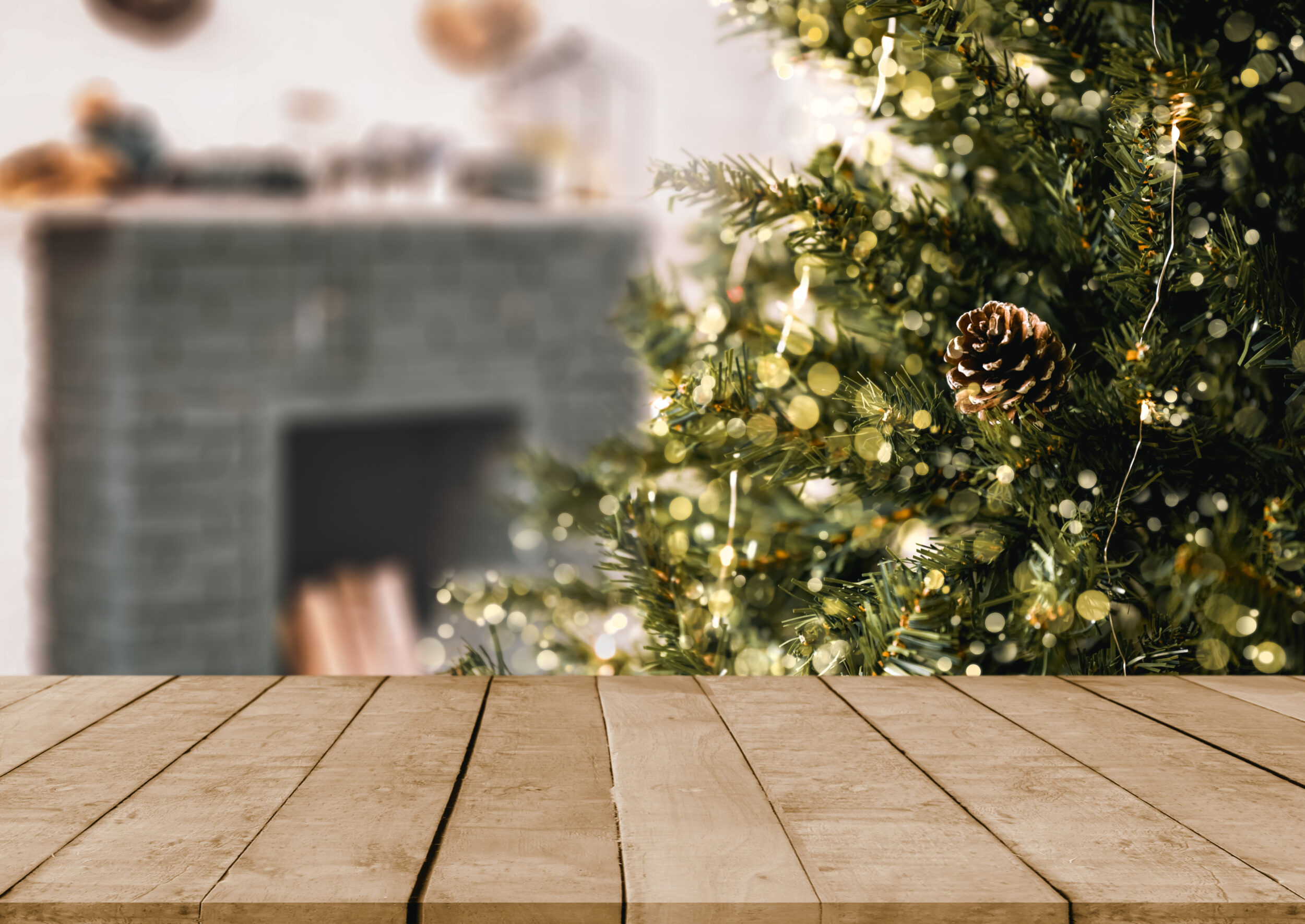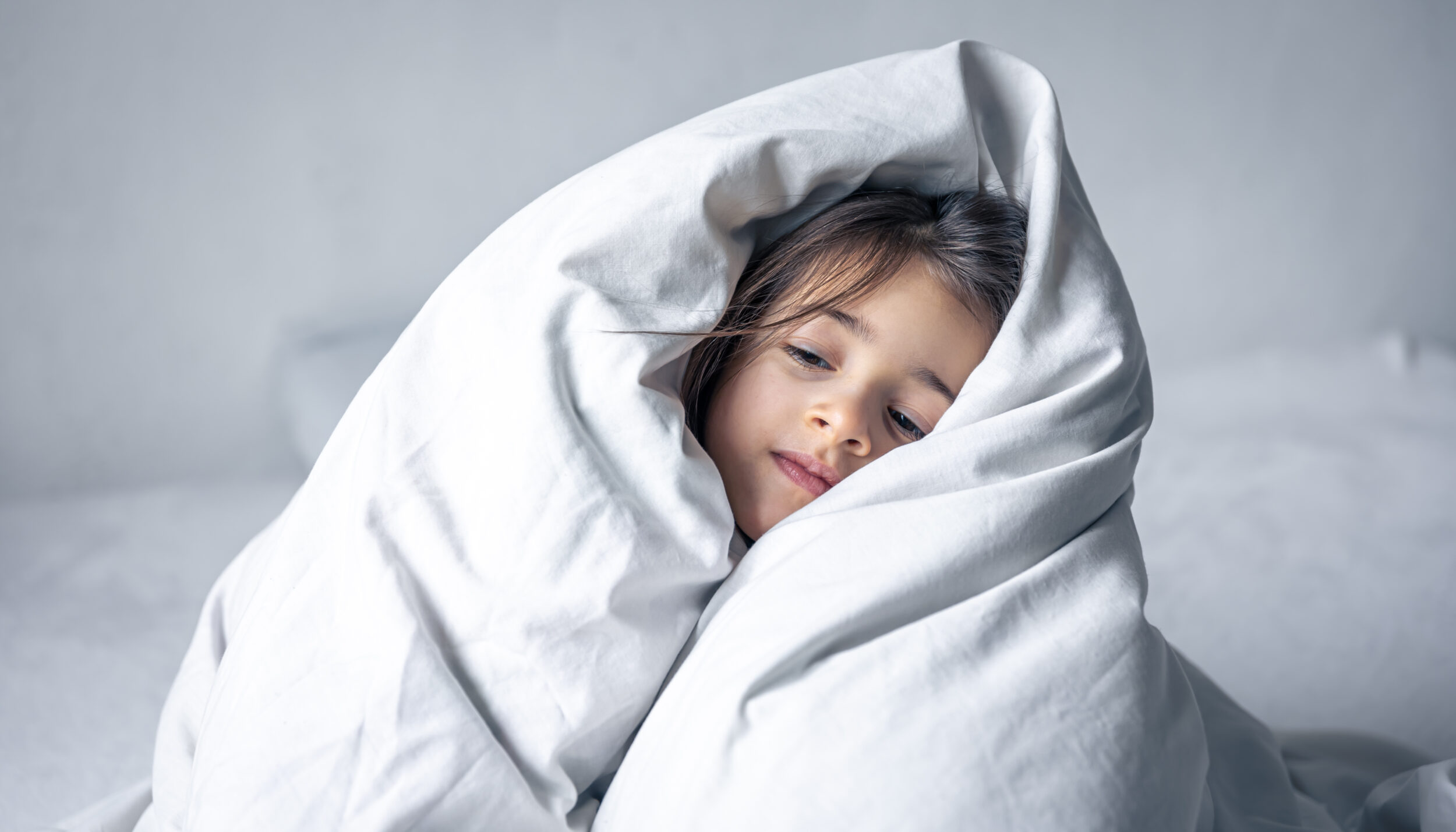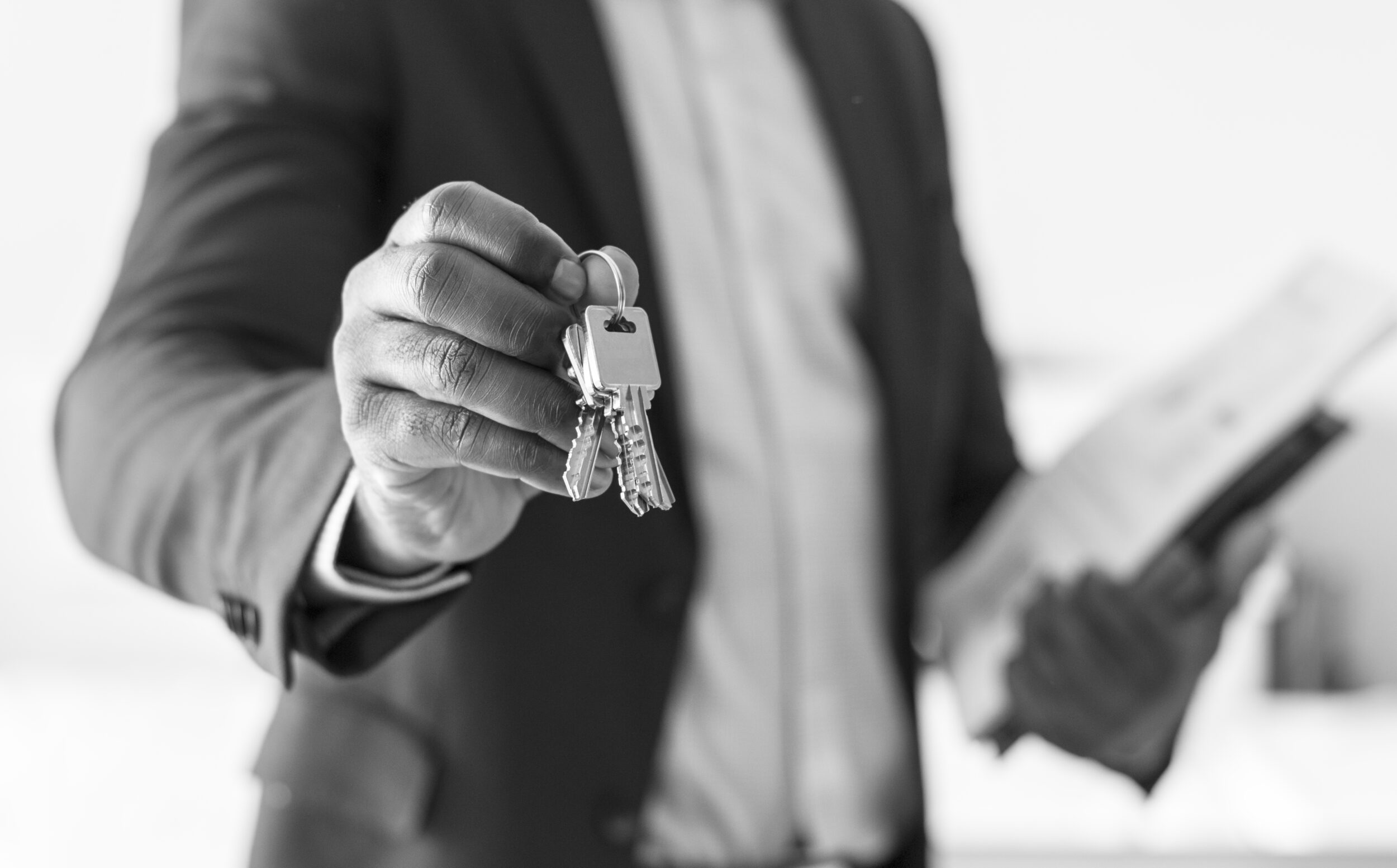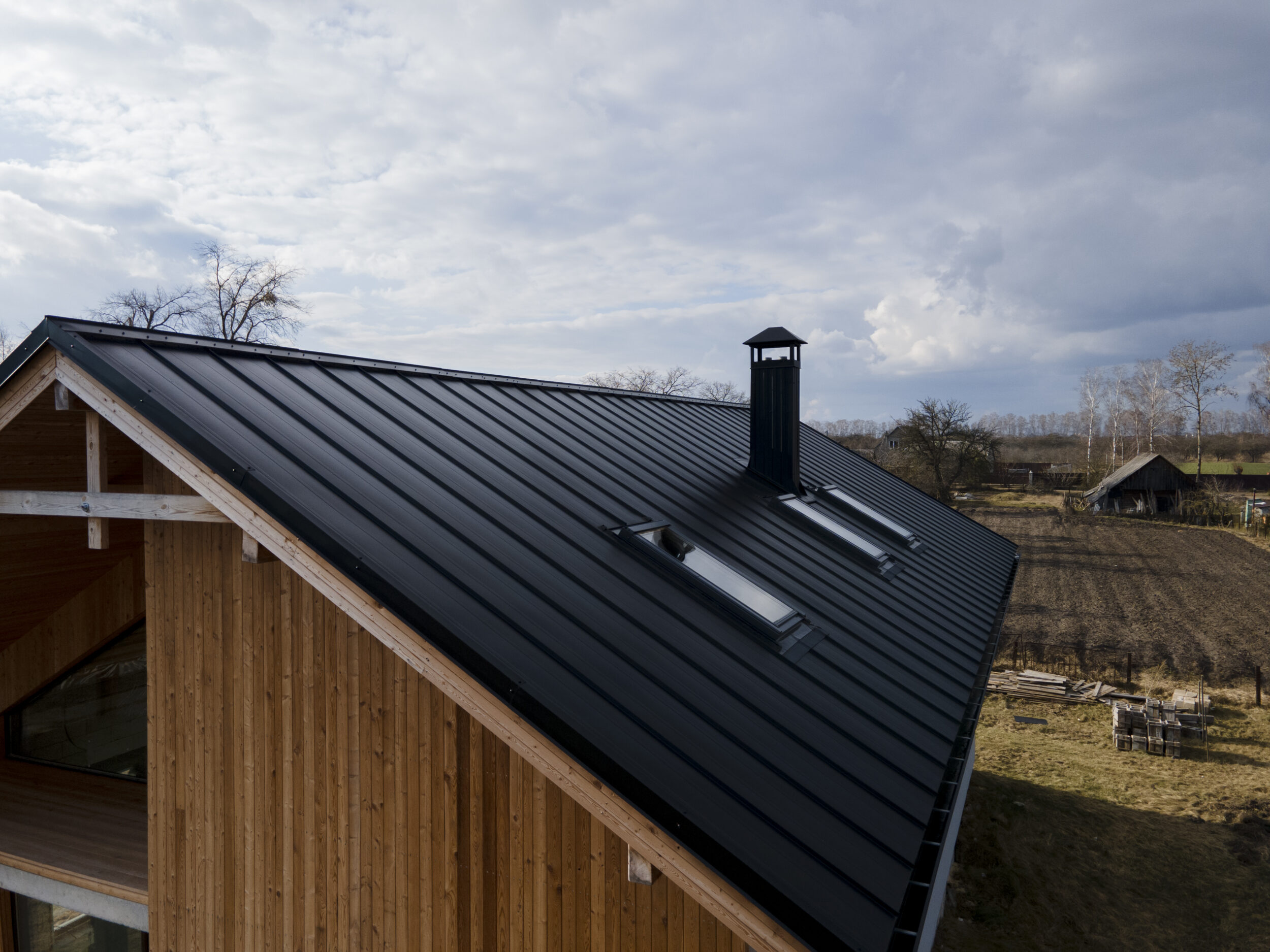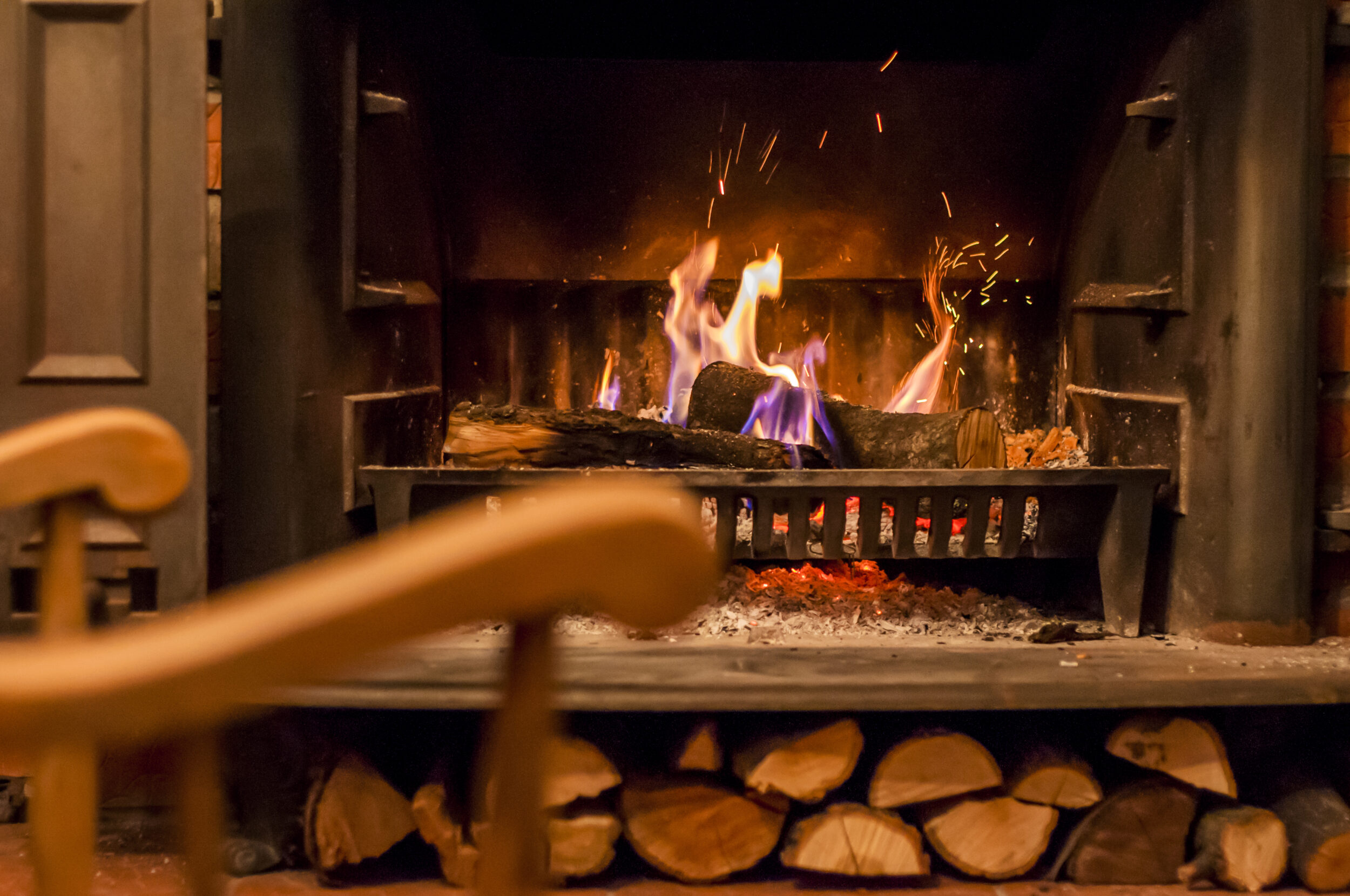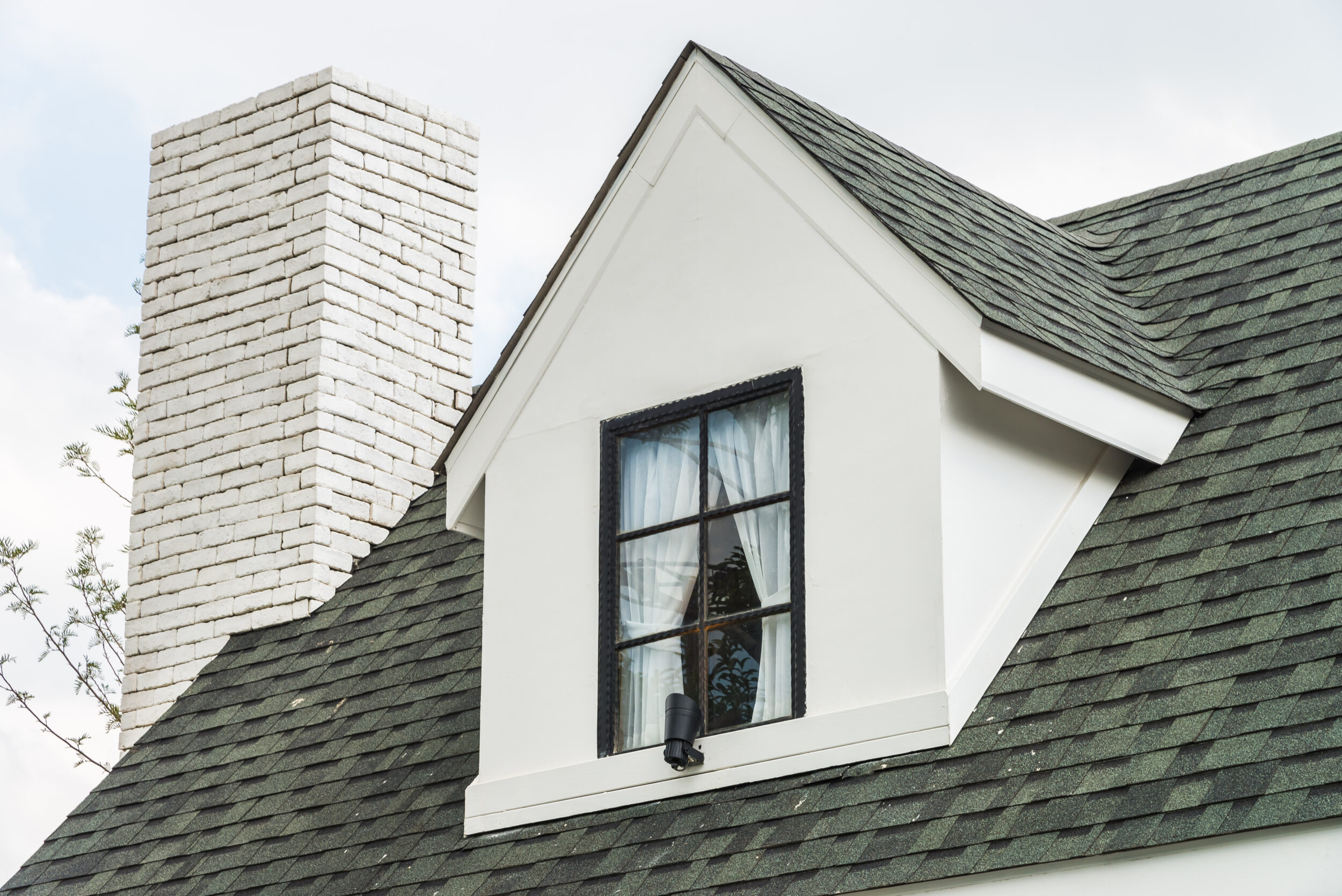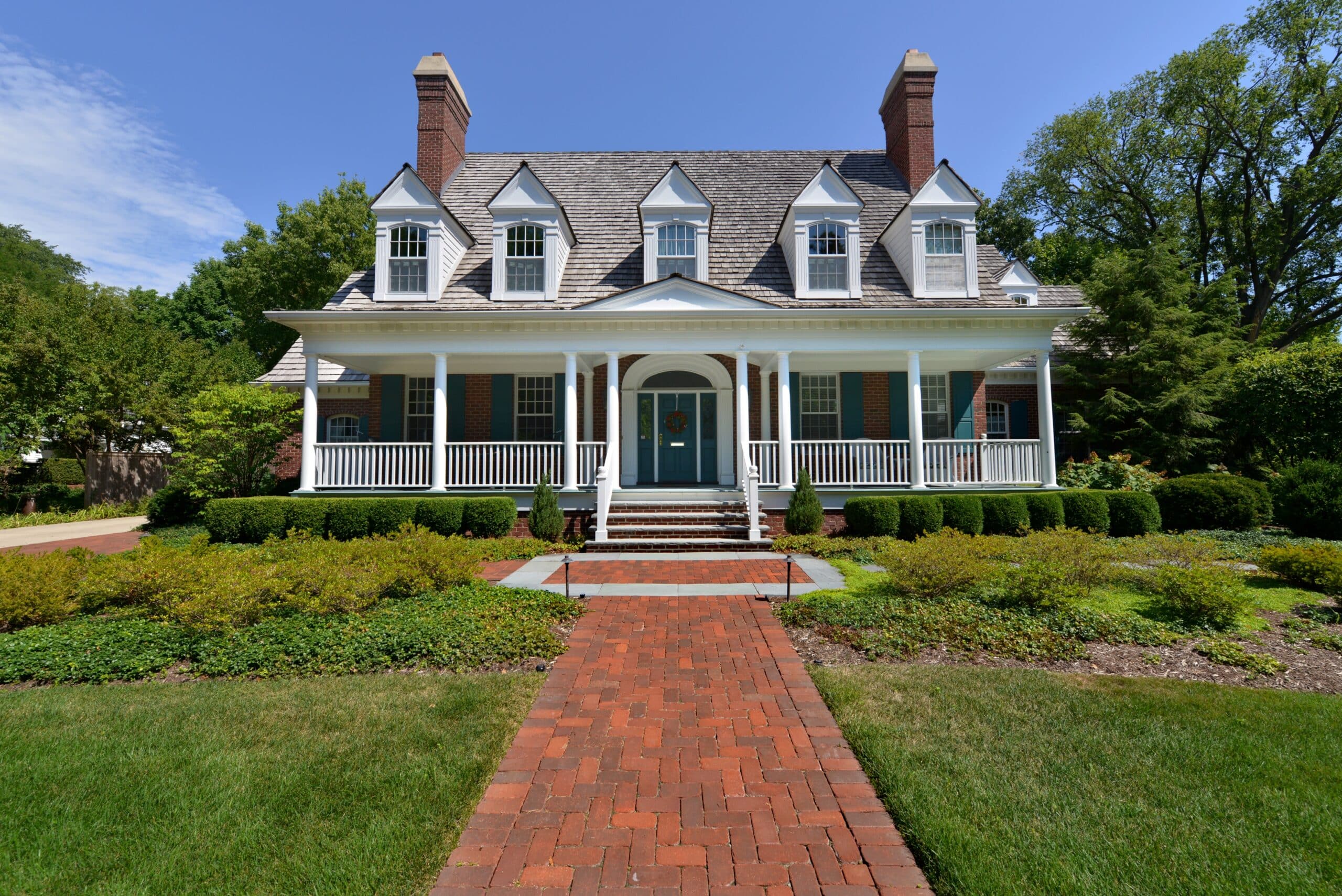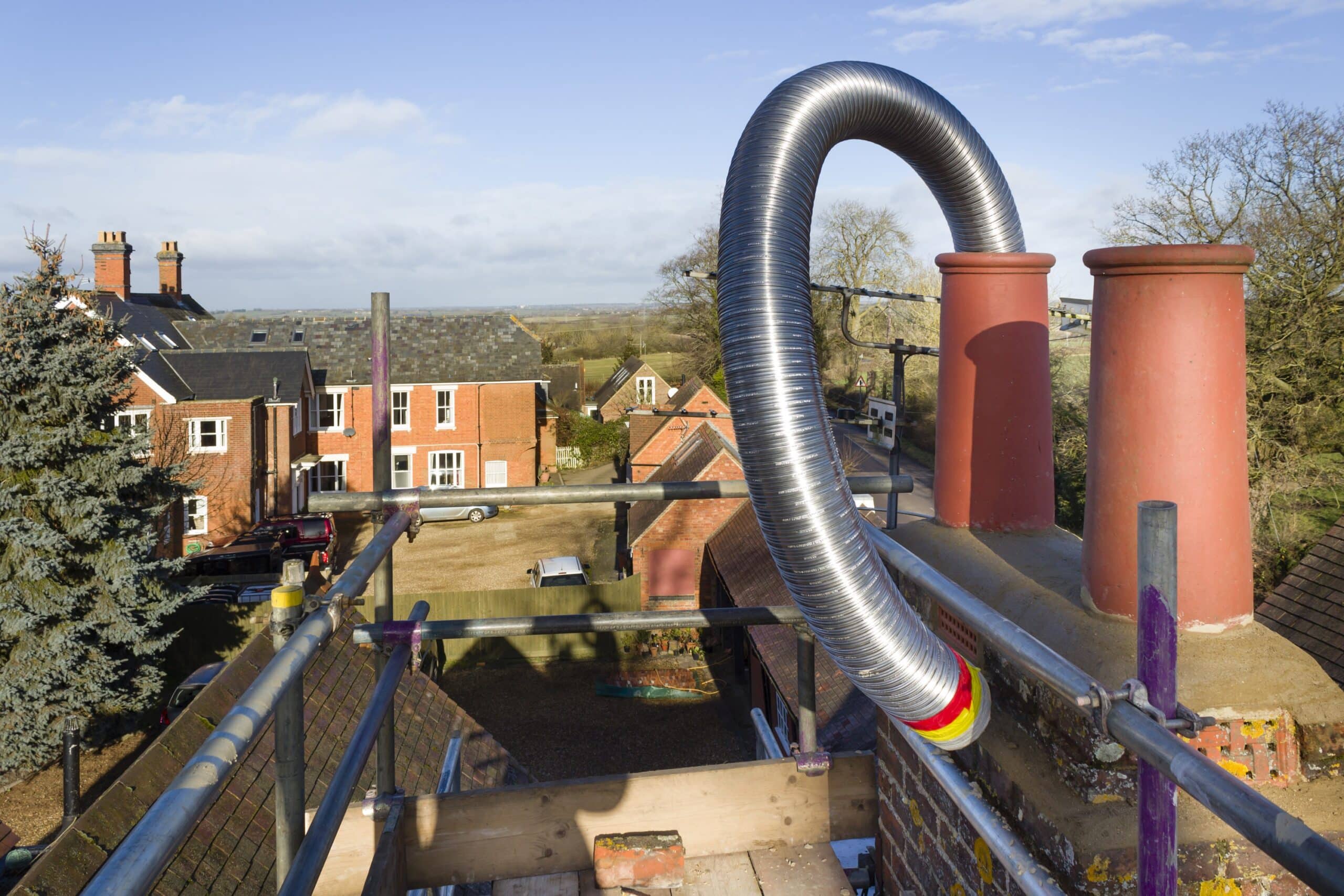How to Make Your Fireplace More Efficient
It’s cold, snowy, icy or rainy and raw outside. You’ve had a long day. You’re tired. You’re chilled. It’s right there, in front of the fireplace. Nothing beats a crackling fire and the comfort and warmth that envelopes you. That is, if you’re standing right by it! Leave the room, and you can feel the temperature drop! Most people use fireplaces as a backup or for aesthetics, meaning your primary heating source (e.g. gas boiler, oil furnace, etc.) is working double time to try to heat the house consistently.
As much as 80% to 90% of the heat created by a fireplace just flies right up the chimney. This not only creates a frosty environment, it puts a damper (pun intended) on your budget. How can you make your fireplace more efficient?
5 Ways to Make Your Fireplace More Efficient
1. Use Seasoned Firewood
Fresh wood, or “green” wood, has a lot of moisture in it. When you burn it, it creates a smokey fire that burns quickly and generates less heat. Seasoned firewood is left to dry for at least six months. This allows a lot of the moisture to evaporate. Your fire will burn both slower and cleaner, helping your fireplace and chimney work as efficiently as possible.
2. Adjust the Dampers
Your damper does a few different jobs. When you are not using your fireplace, it keeps debris, moisture, and cold air from entering your home through the chimney. As your fire burns, you can adjust it (closing it a bit) to feed the fire the oxygen it needs to burn optimally – and to keep warmed air from escaping. When the fire burns out completely, close the damper to keep heat in the firebox. This will provide residual heat for hours.
3. Use a Ceiling Fan
Ceiling fans are a huge help during long, hot, humid summers – but they are equally beneficial in the winter. Choose a model that has a switch that reverses the direction in which the blades turn. You want it to go clockwise in colder months because it creates an updraft and distributes heat throughout your living space. Doing this can save you as much as 15% on your heating costs!
Just make sure you don’t run your fan in a counterclockwise direction. This will have the opposite effect – and no one wants AC during an Indiana January!
4. Use Fireplace Doors
Glass fireplace doors can help boost efficiency. With an open fireplace or one that has a mesh screen, warm air is sucked back into the fireplace and out through the chimney. Installing inexpensive doors and closing them when the fire is burning prevents this and helps radiate heat throughout the area. When you close the doors, don’t forget to open the damper so it can vent exhaust.
Many people prefer not to have anything between them and their crackling fire from an aesthetic standpoint. But if you want to waste less and enjoy more heat, consider this option.
5. Install a Fireplace Insert
As mentioned, typical fireplace designs mean that we sacrifice 80% to 90% of the heat we generate. An EPA-certified fireplace insert is a self-contained heating unit. It fits in the fireplace so you get the look you want. You also get the feel you want as inserts can help you flip the script and retain 80% to 90% of generated heat. At the same time, you’ll use about ⅓ less fuel and produce far less smoke, soot, and creosote. Win-win-win!
We get it: a fireplace epitomizes warmth and comfort. But it’s about the least efficient method of heating your home out there. If you want the look and feel, try these methods to make your fireplace more efficient. The Brick + Ember team is happy to help. Connect with us – and stay cozy this winter.
Why Does Santa Come Down the Chimney?
What’s going on here? How can one person – with a team of reindeer – visit homes around the world in one night? Well… physics, time zones, a bit of magic. That makes perfect sense. But why does Santa come down the chimney? How come this plump, jolly ole fellow opts to squeeze down an 8x8, 8x13, or 13x13” hole? On a roof? In places that often have feet of snow, inches of ice, and months of cold ahead? Why doesn’t he, with his round belly that shakes like a bowl full of jelly, just waltz in the front door?
It’s time to come clean, Santa.
Smoke Goes Up: What Comes Down?
In the 15th century, many folks believed that witches, elves, fairies, and other otherworldly beings could pass through walls and doors. French scholar Petrus Mamoris thought people were giving the occult too much credence and power. So… he explained that these spectral visitors had to enter the chimney – often via broomstick.
Again, makes perfect sense.
The chimney was considered a portal that connected our world to the supernatural. Cultures around the world have stories and legends about chimney-traveling beings. In Slovenia, Skrat is a fairy who brings families riches and treasure. Scottish and English Brownies stole into houses at night – and cleaned them. (Sign us up for that!) Pelznichol, a German creation, slipped down into homes wearing old animal skins and wielding a whip, to reward good children and to scare the bejesus out of the naughty ones. Better watch out, better not cry…
Well. That’s a little dark.
Fortunately, the old Pelznichol story got a bit of an update. According to legend, St. Nicholas, a 4th century bishop in what is now Turkey, dropped bags of gold down chimneys to help people in his community. The dutch word for St. Nicholas is Sinterklaas… Santa Claus. He did not carry a whip and the warning to abstain from crying and pouting was more in fun. Still, as the culture around Christmas evolved, Santa did deploy legions of elves to sit on shelves and make sure children were more nice than naughty.
Why Does Santa Come Down Your Chimney?
He’s got a big job, and his dry cleaner has an even bigger one removing soot and ash on December 26. A clean chimney is not only a safe chimney – it is a Santa-approved chimney.
Are you ready for St. Nick’s arrival? Make sure to schedule your cleaning in the fall so you’re prepared for a safe, warm, cozy winter and a magical holiday season. Contact Brick + Ember.
How to Decorate a Chimney for Christmas: Don’t!
Don’t decorate your chimney! It serves a functional, important purpose, and it is important that it is not obstructed by any material that could impair its performance or impact safety. That said… feel free to decorate your mantle and add a fun, festive flair for the holidays! Decorating around your fireplace is a great way to celebrate the season – safely.
5 Tips for Decorating Your Fireplace/Mantle Beautifully – and Safely
1. Follow the 3-Foot Rule
Safety first, folks. You don’t want anything happening to your family, your home… or Santa! The National Fire Protection Association recommends having a 3-foot zone around your fireplace/stove in order to prevent fires. Keep any combustible material out of this zone. This includes decorations, blankets, pillows, wrapping paper, Christmas trees, wreaths, and anything else that could feed a fire.
This also means that, if you have a working fireplace, you should not hang stockings, garland, or other materials that could pose a hazard while the fire is lit. It’s a good idea to keep a fire extinguisher handy as well.
2. Get Your Chimney Cleaned
Again, it’s not as fun as stringing lights or singing carols! But making sure your chimney is professionally cleaned before the heating season is key to a peaceful holiday season. Ideally, this happens in the early fall before you light your first fire, so you’re ready to go.
3. Enjoy the Holidays In a Quintessential Christmas Village
Use your mantle as a mini village, building a world of wonder and delight. If you want to recreate a quaint, old-fashioned town at Christmastime, use the opportunity to set up little houses, figurines, faux gifts under faux trees, wooden woodland animals, and other elements that create a calm, serene atmosphere. And if you want to involve the kids (or your crafty self), do a gingerbread village. It’s a great activity for long winter days, and it will look great on the mantle.
Alternatively, you can honor your faith by setting up a Nativity scene and remembering your reason for the season.
4. Light It Up
Candles are one of the most simple – yet most effective – ways to decorate your holiday mantle. While slim, white candles in elegant tapers or holiday scented options are great, you can also opt for flameless candles so you don’t have to worry about a fire hazard. They will provide a warm, lovely glow without the risk. And if you forget about them… no big deal!
5. Get Help from Nature
You don’t have to spend money to create a beautiful scene. Go out for a walk instead. See if you can gather natural materials to decorate your mantle. Pinecones, evergreen sprigs, winter berries (toxic: place out of reach of children – or “cheat” and use artificial), birchwood, etc., can make a lovely display. It can also double as a fun scavenger hunt for kids on holiday break! You can add a few ornaments and decorations for pops of color as well.
Celebrate the Season Safely
These tips are just the beginning. Really, if you observe the 3-foot rule and take other basic safety precautions, you can decorate your mantle so it perfectly captures your family’s traditions, style, and personality.
Give your household the gift of safety and peace of mind this year. Contact Brick + Ember to ensure your chimney and fireplace are in top condition.
Is My Chimney Making My House Colder?
Is your chimney making your house colder? It seems like a counterintuitive question. After all, the chimney is supposed to contribute to a warm and cozy atmosphere! But in some cases, yes, it may be doing the opposite – and sending your heating costs right through the roof. Why, and what can you do about it?
Are You Heating the Outdoors?
Nothing is as comforting and homey as snuggling up and watching the flames of a crackling fire on a cold night. But when you have a wood-burning fireplace, it can certainly feel as if you’re losing more heat than you’re generating. Unfortunately, this can be true. According to some estimates, between 80 and 90 percent of the heat created in a wood-burning fireplace goes up in smoke. That is, it just flies right out the chimney. Another way to look at it: for every $100 you spend on wood, you get $10 to $20 of heat.
What’s happening?
When you light a fire, it needs to eat. To do so, it draws the oxygen it needs for combustion from the room, creating byproduct gasses (mostly carbon dioxide). As the air warms, waste gasses travel up the chimney, carrying away a lot of heat. You feel radiant warmth in front of the fire (which is why it’s toasty right there and chilly in the next room).Air from cooler parts of the house or outside swoosh in to replace the air that your fire needs. The net effect is that it can feel colder in the areas that are not directly adjacent to the fireplace.
Even when the fire is not burning, you still deal with the fact that warm air rises. It will travel up and out through the chimney. Cold air comes in to take its place. While this is important for creating an optimal draft (i.e. the force that pulls smoke up and out of the chimney, while allowing cool air in to feed the fire), too much cold air is… well, cold!
What Should You Do?
When the fire is not burning, make sure you close the damper completely. This will keep warm air in the home. When you do have a fire lit, close the damper partially to minimize the loss of heat. You may also consider installing an electric blower to circulate the warm air more effectively.
Another option is to install inserts with vents that pull air from the outside rather than from the room. This will create more radiant heat than an open fireplace. If you do love the look of your open fire, you may want to retrofit it with a deeper firebox.
Fireplaces are warm and cheery features in many homes, and there is no substitute for the cozy feeling they impart. Just make sure you’re heating your house, not the great outdoors!
And as always, no matter what your heating source, make sure that your chimney is inspected and cleaned annually. Brick + Ember’s team of certified professionals will ensure that your system is safe for use. Get in touch with us to schedule your service.
Does a Chimney Get Inspected When Closing On a House?
You’ve found your home. Whether it’s a starter, a fixer-upper, or your dream house, it’s soon to be yours! It’s an exciting time, but before you sign on the dotted line, make sure you get a chimney inspection. Failing to do so could leave you with big – costly and potentially dangerous – problems.
Does a Chimney Get Inspected When Closing On a House?
It should. Unfortunately, it doesn’t always happen.
Let’s find out why. Most buyers know that their mortgage lenders require a house inspection before they agree to extend the loan. They need to make sure it is a “good risk” for them – and you need to make sure you are fully aware of any issues that could mean expensive repairs or unsafe conditions. But what most buyers do not realize is that a typical home inspection does not include a professional chimney inspection.
A house inspector is certainly highly knowledgeable in their area, and they will check visually to see if the chimney appears straight and undamaged. This, of course, does not mean that it is in proper operating condition. It just means that there are no signs of trouble upon a cursory inspection.
It is possible that a chimney can appear to be undamaged and pass inspection. The buyer closes, and then, on a cold winter night, they start a fire. This is the worst time to learn that the chimney liner is cracked or corroded. A damaged liner can lead to fire, the infiltration of toxic gasses (e.g. carbon monoxide) into the home, and deterioration of the chimney structure. A general, visual house inspection will not detect this extremely dangerous problem.
This is why homeowners need to order a level 2 chimney inspection before closing on a house.
Level 2 Chimney Inspection
The National Fire Prevention Association (NFPA) sets the standards for chimney inspections, and they have categorized them in three levels. Level 1 is your basic inspection that you should get annually. Here, the chimney sweep examines the accessible part of the chimney (inside and out), and the accessible parts of the heating appliance and chimney connection. They’re looking to see if it is free from obstructions and that components are in good shape.
A level 2 chimney inspection is more intensive and is highly recommended by the NFPA when buying a house. In addition to the basics covered by a level 1, the chimney sweep will look at the internal surfaces and flue liner joints, examine clearances from combustibles, and inspect accessible portions of the home impacted by the chimney/heating appliance, including the basement, attic, and crawl spaces.
Protect Your Investment – and Your Home
While not strictly required by your lender (or by law, if you do not require financing), getting a level 2 chimney inspection is a smart move. Opt for a Chimney Safety Institute of America Certified Chimney Sweep for optimal results and exceptional peace of mind. The cost is usually between $200 and $1000, but this could save you many times that by catching problems early.
Contact Brick + Ember to schedule your level 2 inspection. Our CSIA Certified Chimney Sweeps have the extensive training and expertise you need before you close on your house.
Why Is a Chimney Cap Necessary?
When you think about it, there are many potentially dangerous items we bring into our homes, from appliances to the electricity on which they run. One of the most prominent is, of course, our heating systems. While they serve to provide us with warmth and comfort, they can also put us at risk for carbon monoxide poisoning, house fire, and other hazards. This is why we do everything possible to mitigate the risk and ensure heating systems are operating safely and efficiently. Your chimney cap plays a big role in this.
Is a Chimney Cap Necessary?
First, let’s back up: what is a chimney cap? It is a two-part protective covering. The first part is mesh, usually made from copper or steel that fits over the top of the chimney crown (i.e. the very top of the structure). On top of the mesh is a metal cap. It’s a seemingly very simple addition to a chimney – so why is it so important?
Chimney caps:
- Help prevent fire. You want a fire in your stove or fireplace and only in your stove or fireplace! A cap helps catch sparks or embers that make escape up the chimney and out the flue. Worst case scenario, it can start a fire on your roof. The mesh component keeps these hazardous sparks where they belong.
- Keep water out. Moisture is the enemy when it comes to your chimney. It can accumulate and cause extensive mold and mildew growth; rust and corrode metal components, including the flue; and seep into the joints of brick and mortar chimneys, causing them to deteriorate far faster than they should. The chimney cap is an effective layer of protection from moisture.
- Increase efficiency – and comfort. Chimneys work by allowing smoke and gasses to escape from the house, but they are also designed to allow cool air in to create an efficient cycle that results in a nice, warm fire. If you do not have a cap, though, gusts can blow back down. Essentially, your fire has to work harder to keep your house warm (meaning you’ll burn more fuel). Besides being chilly, there is also the chance that smoke, ash, and embers can return down the flue and into your home.
- Keep unwanted visitors out. Santa notwithstanding, we don’t really want anything coming down our chimneys. A cap prevents squirrels, rats, mice, raccoons, and birds from trying to seek shelter here. Pests can wreak havoc on the integrity of your chimney.
Think about it like this: a chimney cap is necessary because it keeps the things you want in (e.g. fire, warmth) in while keeping the things you want out (e.g. water, animals) out. Learn more here.
A chimney can function without a cap – but we do not recommend it. First, it is required by international building code but more importantly, it helps keep you, your household, and your property safer. Increased efficiency and longevity are certainly nice bonuses as well!
Get In Touch with Brick + Ember
Want to install a chimney cap? Need to replace your current model? Contact the Brick + Ember team to see just how easy it is to improve the safety, efficiency, and comfort of your heating system.
Why Does Smoke Blow Back Down a Chimney?
Chimneys are meant to be uncomplicated contraptions! Smoke and noxious gasses go up and away from your house. The only thing that should come down a chimney is Santa Claus. Simple and straightforward, right?
So why is smoke blowing back down your chimney – and what can you do to prevent this from recurring?
Cold Night: Smoky House?
Nothing is more comforting and cozy than a warm fire on a cold day. When chimneys and heating sources are functioning properly, this is exactly what you will enjoy. The simple explanation is that the warm air from the heat source (i.e. the fire in the stove) rises up through the chimney flue. This is called the draft. A good draft pulls smoke and combustion byproducts (e.g. carbon monoxide) up and out of the home while replacing it with cooler air from outside. This creates a cycle that essentially feeds the fire – fire eats oxygen! – while continuing to move smoke and gasses out.
When smoke blows back down the chimney… There is something wrong. You get that smoky effect, which may be fine if you’re into 2000s-era clubs but is not so pleasant in your home. Not only that, it can create a safety and health hazard. If you can smell the smoke, then you are breathing it in – along with carbon monoxide, volatile organic compounds (VOCs), polycyclic aromatic hydrocarbons, and other pollutants and irritants.
Smoke blowing back down the chimney is a risky and potentially very dangerous situation. Why is this happening?
5 Reasons Smoke Blows Back Down a Chimney – and What to Do
1. The Damper Is Closed
The damper controls the airflow to your firebox. While it can take a little experimentation, learning how to operate the damper allows you to control how fast and hot your fire burns. This way, you can optimize how much wood you use and what your ambient temperature is. That said, the damper needs to be wide open when you light a fire. If the damper is closed, it blocks the path smoke and gasses need to exit the chimney. There is nowhere for it to go but back down into your home.
Again, keep your damper completely open when you light a fire and whenever the doors of the stove are open (e.g. when you are putting in more wood). Do not close it completely unless the stove is off and cold. When you want to control temperature and wood burn, you can adjust it to a partially open position.
2. Your Wood is “Green”
Green means your wood hasn’t had a chance to dry properly. Well-seasoned firewood – which has been left to dry for about 12 months to remove virtually all moisture – ensures a good burn. If the wood is green, it may create a thicker, more abundant smoke that your flue may not be able to handle. This will cause “back-puffing,” or smoke coming back down the chimney.
Make sure you purchase well-seasoned wood. You’ll burn less and enjoy a much more consistent, safe heat.
3. You Have a Blockage
Assuming your damper is open when you start a fire or open the doors of your wood burning appliance, smoke blowing back down may mean that your chimney has a blockage. This could be a build up of creosote or a bird’s nest, for example. In either case, smoke and gasses do not have a clear path out of the chimney and will be forced back down. Regular chimney cleaning and maintenance is essential in preventing this problem (and many others!).
4. Your Home Is Too Well Insulated
Who knew that would be a problem! The fact is that today’s houses are much better insulated than those built prior to about the 1970s. Advances such as spray foam insulation, weather sealed windows, and house wrap create very tight homes that are much more efficient. The issue, though, is that there may not be enough makeup air to allow the wood stove/fireplace to draw properly.
Makeup air is the new air that replaces the air that exits through the chimney. It must be balanced so you have neutral indoor air pressure. The point is, your house may be so tight that it isn’t delivering adequate makeup air. To correct this, you could either open a downstairs window… which isn’t appealing in the middle of winter… or install a chimney fan or powered makeup air kit to your HVAC system or exhaust system. Our team is happy to assess the situation and help you find the solution that works for you.
5. The Weather Outside is Frightful
Extreme cold or wind and cross drafting can cause smoke to blow back down your chimney. For example, when it’s frigid and you have a cold, unused flue, it can fill up with high density air that blocks the path smoke needs to travel up the chimney. It is important to preheat your chimney before your first fire of the season. Learn how with our post, “The Right Way to Light a Fire: Surefire Ways to Stay Warm, Cozy, and Safe.”
Strong winds can also cause “dynamic window loading.” Basically, when wind is gusting on one side of the house, it creates a high pressure zone there and a low pressure zone on the other side. Remember, chimneys don’t like unequal pressure! Again, you can open a window on the windy side of your home or install an outside air kit on the negative pressure side.
Ask the Experts
If you are experiencing a smoky house when using your wood-burning appliance, contact the experts. You don’t want to jeopardize the health and wellbeing of your household or put your home at risk. Brick + Ember will discuss your situation, determine the cause(s) of smoke infiltration, and develop a viable strategy to correct the issue.
Don’t wait! Contact Brick + Ember now.
Can Insurance Pay for a Chimney When You’re Replacing a Roof?
Do you ever watch insurance commercials? Companies from Geico and Progressive to AllState and Farmers have perfected the art of the ad; they’re funny, entertaining, and memorable. There’s a good reason for this: insurance is incredibly boring! No one likes to curl up with a good policy or check clauses and conditions when they’re scrolling on their phone. We want insurance to protect us when we need it… and then we want to forget about it.
But when it comes to maintenance, repair, and replacement projects, it is critical that homeowners understand what their policies cover – and what they do not. So does insurance pay for a chimney when you’re replacing a roof?
Can Insurance Pay for a Chimney When You’re Replacing a Roof?
Sure. It can. But does it? That depends.
Confusing answer? That’s because it can be a confusing topic! Let’s start with insurance related to roofs to get a good understanding of what may be covered. Typically, the average lifespan of an asphalt shingle roof (the most common type in the US) is 20 years. Insurance companies typically limit or even exclude replacement coverage when roofs are older than 20 years. If you have an older roof, they may have done an inspection before agreeing to cover you; likely they may allow for actual cash value if it is damaged under certain circumstances.
Actual cash value is different from replacement value. If you have a 2000 square foot house with a relatively simple roof line, for example, you’re looking at between $4700 - $11,000 to replace it. If your roof has steeper slopes, gables, hips, and valleys, though, your costs will increase. You must also factor in the removal of existing materials, as well as replacing roof decking if yours has been damaged or is in poor condition. So let’s say your replacement cost is $11,000.
Depending on the age of your roof (and perhaps other factors outlined in your policy), your insurance company may only offer actual cash value – after your deductible. For a five year old roof, you may have an actual cash value of $8500. Ok, not bad. But you have a $4000 deductible. Your policy would pay $4500, leaving you to come up with the balance of $6500. Insurance will typically pay out $3000 (after deductible) for a 10 year old roof. And for a 20 year old roof, the actual cash value is $4000, less the $4000 deductible… leaving you with $0 covered.
Type of Damage
Now, the type of damage is also important. Your insurance company will likely pay for damage caused by certain natural and/or sudden events, such as a freak hailstorm or windstorm, fire, or a falling tree branch. They will not pay when you need to replace a roof that’s outlasted its lifespan, has a leak that led to water damage, has not been maintained, etc.
To recap: If you need to file a claim because your roof was damaged due to a chimney fire or a storm knocked a tree into it, you should be covered – if your roof is less than 20 years old. If your roof is not maintained adequately or wear and tear has caused issues, you will not be covered.
So what about the chimney?
Insurance can pay for a chimney when you’re replacing a roof in some cases. For example, if there is a storm that knocks a tree onto the roof and into your chimney, you will likely be covered. If that tree falls and causes your chimney to lean, you will also likely be covered for the cost of these repairs. But if your chimney was already leaning prior to the event, then damages are probably not covered because the chimney was due for improvements.
The odds of insurance paying for a chimney when you are replacing a roof are… Well, not all that great. Unless the roof and chimney were in good condition and were damaged by these natural or sudden events, you are going to have to foot the bill.
What if you just want to file a claim to replace your chimney? Same general guidelines apply. If it was damaged by a natural or sudden event, then yes, you should be good. If it was in need of improvements, then no, likely you need to pay for any repairs and replacements yourself.
Read Your Insurance Policy – and Call Us
Yes, they are dull… even mind numbingly so! But it is vital that you know what you are covered for and what is excluded from your policy. Take a look at your homeowner insurance documents and/or call your agent to learn the specifics. Do this even if you are not facing a crisis; it can be beneficial for your peace of mind.
There are many instances in which you will not be covered when it comes to your roof and/or chimney. This is why it is so important to maintain them properly.
While we aren’t roofers by trade, we do know our way around a chimney. Take the first – biggest – step in saving yourself time, money, and aggravation: contact Brick + Ember for a thorough chimney inspection and schedule your annual cleaning. We can’t control what your insurance covers, but we can ensure that you are as safe and protected as possible when it comes to your chimney.
We are here for you. For answers to all your questions, contact us at (317) 500-1250 or get in touch with us online.
Why Does My House Have Two Chimneys?
Under the category of “Things That Make You Go Hmmm,” you may be wondering why your home has two chimneys. Is this necessary? Can you remove one?
Before you get the wrecking ball out, take a few minutes to learn why you might be the proud owner of not one but two chimneys.
1. You Have Two Different Heating Fuel Sources
Simple enough: you may have a wood stove or fireplace for that cozy warmth, as well as propane or oil for consistency – or on the other hand, propane or oil as your primary heat source and wood for backup. Regardless, the solution to venting dangerous gasses and providing adequate airflow is to have two chimneys (both of which are properly lined).
2. You Don’t Have a Chimney with Multiple Flues
In older houses located in colder climates, it was fairly common to have one chimney with two or more separate flues. This would allow a homeowner to vent, say, an oil-burning appliance as well as one, two, or even three wood-burning stoves/fireplaces. “Older” is the keyword here: these houses were not airtight. There were plenty of cracks and gaps to allow gasses to exit.
Today’s modern homes are far better insulated; during those chilly winter days, we don’t want a bracing breeze inside! In order for a chimney to accommodate two or more different heating sources, each flue must be properly constructed, lined, and inspected, otherwise you face a significant fire or carbon monoxide risk.
In many cases, homes are just built with two separate chimneys instead of one with multiple flues. Alternatively, most areas require a separate chimney if you have heating sources on different floors (e.g. a wood stove on the ground level and a fireplace upstairs).
3. You Used to Have a Fireplace
You may have a chimney for your oil furnace or propane stove. That’s your only heating source, so why is there another chimney hanging out on your rooftop? It could be that you used to have a fireplace. In older homes, as people upgraded to more efficient, easier forms of heating, they simply blocked off the fireplace. Removing the chimney was a pricey proposition, so many folks just left them up.
In this case, you can remove the second chimney. Again, cost is a concern, so it becomes a financial decision as well as an aesthetic one.
Safety First – and Second
No matter why your home has two chimneys, it is essential that both are cleaned and inspected regularly. All it takes is a simple phone call or online form to schedule your service. The payoff is enhanced safety and peace of mind. Make the call today.
When Do You Need a Chimney Liner?
When do you need a chimney liner?
Easy: Whenever you have a chimney!
But this is your home, and your safety is of the utmost concern. It is helpful to know what a chimney liner is so you can fully appreciate why it is so essential. So, without further ado….
What Is a Chimney Liner?
A chimney liner, which you may also hear referred to as a “flue liner,” is a thin tube that lines the entire length of the chimney. They are most often made of stainless steel today, though clay tiles are common in older homes.
Sidenote: the problem with clay tiles is that, while fairly inexpensive, they are prone to cracking and/or gapping in the mortar joints. This can allow smoke and embers to work their way through the liner, causing a fire. It can also cause draft issues that leave your home smelling of smoke.
Now, a properly installed and National Fire Protection Association (NFPA) approved chimney liner offers key benefits:
- It greatly enhances safety. A liner safeguards your chimney from intense heat, as well as from the build-up of creosote and soot that can impair performance. Without this protection, you are vulnerable to a chimney fire.
Additionally, you will greatly reduce the risk of exposure to the byproducts of combustion (e.g. carbon monoxide). If you do not have a liner or if it is not in good shape, then toxic gasses cannot exit properly. Instead, they can infiltrate your home, putting you and your household members at risk.
- A liner increases efficiency. With fuel prices the way they are, any step we can take to increase efficiency is well worth it. Chimney liners are essential in facilitating steady airflow, allowing wood and other fuels to burn as efficiently as possible.
- It’s cleaner. We mentioned creosote and soot; not only are these hard to clean from an unlined chimney, they are also highly flammable. A stray ember can touch off a dangerous situation. A chimney liner, particularly stainless, is easier to clean and maintain, thus keeping your home safer.
When Do You Need a Chimney Liner?
We’ll go back to our earlier answer: you need a liner whenever you have a chimney. Let’s be more specific:
You need a chimney liner if:
- You burn wood, pellets, oil, propane, or another fuel. Even though oil, propane, and other liquid fuels don’t create the creosote or soot related to wood-burning, they do create a mist that needs to be properly vented. You also need a liner to ensure that your system works with maximum efficiency, allows toxic gasses to exit the home, and keeps you, your family, and your property safe.
- You have an older home. Since the 1940s, building codes have evolved and most jurisdictions (like ours) require homes with chimneys to have approved liners. If you have an older home, it may pre-date these standards, and you may not have a liner at all. In this case, have one installed ASAP.
- Your current liner needs to be replaced. For example, you could be dealing with:
-
- Water infiltration/damage
- Condensation in the home
- Deteriorating chimney walls
- You want to transfer ownership of the property (e.g. sell it). You will also need to make sure your chimney liner is (a) present! and (b) functioning properly in order to pass inspections.
Line Us Up
If you need a chimney liner installed or replaced, the best time to do it is now. It’s not worth waiting when it comes to your safety. Contact Brick + Ember to discuss your needs – and achieve the comfort, security, and peace of mind you deserve.

